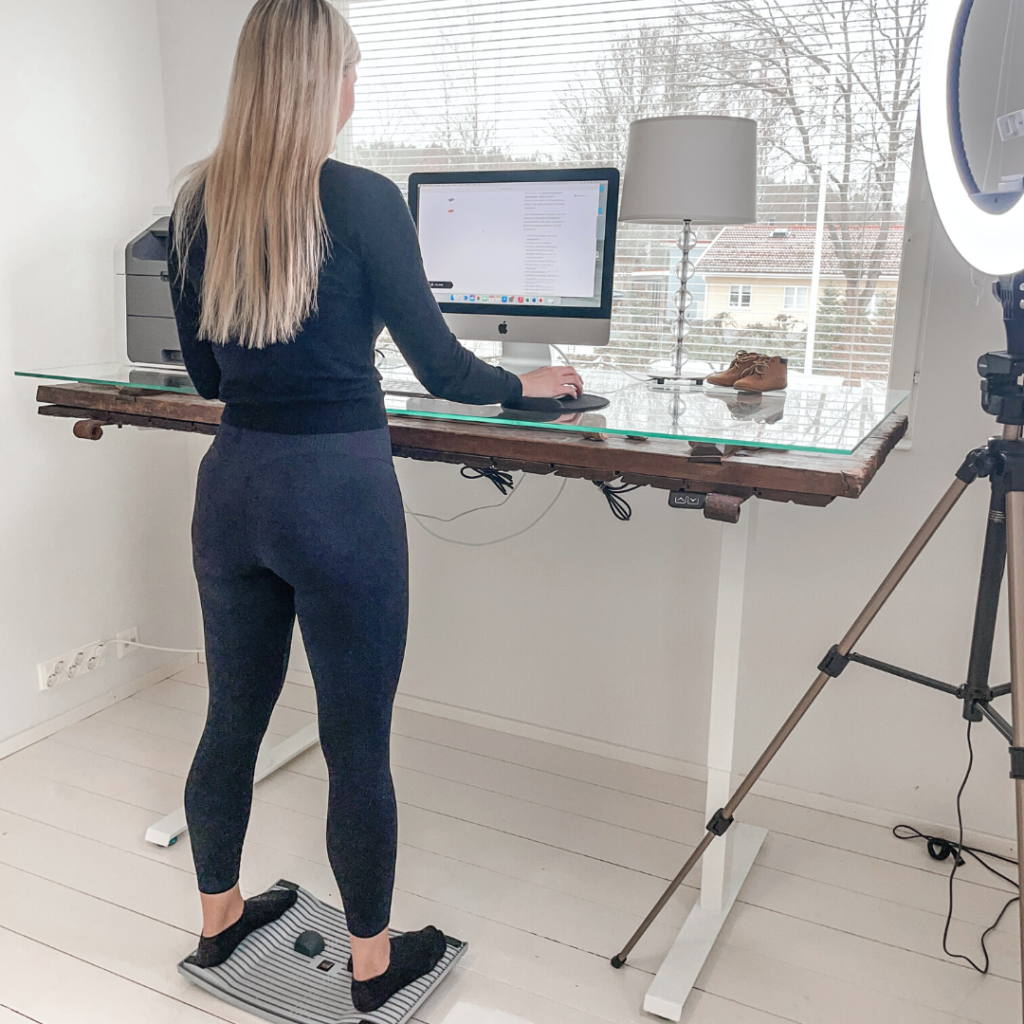Setting up an ergonomic home office involves creating a workspace that supports your body’s natural posture and movement while reducing strain on muscles and joints. A proper setup includes a correctly positioned chair and desk, monitor at eye level, keyboard and mouse at elbow height, and adequate lighting. By following ergonomic principles, you can prevent back pain, neck pain, and other musculoskeletal issues that commonly develop with poor office setups. Small adjustments to your workspace can make a significant difference in your comfort, health, and productivity during long working hours.
How do I set up an ergonomic home office?
Creating an ergonomic home office starts with selecting the right furniture and positioning it correctly to support your body’s natural alignment. Begin with a supportive chair and a desk at the proper height for your body.
Your workspace should promote a neutral body position where you can sit with your feet flat on the floor, back supported, and arms relaxed. Good ergonomics isn’t just about comfort—it’s about preventing injuries and chronic pain that can develop over time from poor posture and repetitive movements.
Key components of an ergonomic home office include:
- Adjustable chair with proper lumbar support
- Desk at the correct height
- Monitor positioned at eye level
- Keyboard and mouse placement that keeps wrists neutral
- Adequate lighting to reduce eye strain
- Space for movement and stretching
Remember that even the best setup requires regular breaks and position changes to prevent stiffness and promote good circulation.
What is the correct height for my desk and chair?
The correct desk height should allow your elbows to rest at approximately 90 degrees when typing, with your arms relaxed and shoulders not hunched or strained. For most people, this means a desk height between 70-75 cm, though adjustable desks offer the best customization.
Your chair height should enable you to keep your feet flat on the floor with knees at or slightly below hip level, creating a 90-110 degree angle at the knees. This position helps prevent lower back pain by maintaining the natural curve of your spine.
For proper positioning:
- Sit with your bottom against the back of the chair
- Adjust the chair height so your feet rest comfortably on the floor
- Use a footrest if your feet don’t reach the floor after adjusting your chair
- Position armrests to lightly support your arms without pushing your shoulders up
- Ensure 3-5 cm of space between the front edge of the chair and the backs of your knees
If you’re using a non-adjustable desk, modify your chair height and use accessories like keyboard trays or monitor stands to achieve proper alignment.
How should I position my computer monitor?
Position your monitor directly in front of you, with the top of the screen at or slightly below eye level. The ideal distance between your eyes and the screen is about an arm’s length away (50-70 cm), which helps prevent eye strain and neck pain.
If you wear bifocals or progressive lenses, you may need to position the monitor slightly lower to avoid tilting your head backward to see the screen clearly.
Additional monitor positioning guidelines:
- Center the monitor with your keyboard to avoid constant neck twisting
- Tilt the screen slightly upward (about 10-20 degrees) to reduce glare
- Position monitors perpendicular to windows to minimize glare
- For dual monitors, place them side by side with minimal gap if used equally, or position the primary monitor directly in front with the secondary at a slight angle
Proper lighting complements monitor positioning. Avoid harsh overhead lighting that creates screen glare. Instead, use indirect lighting and consider an adjustable laptop stand for proper viewing height when needed.
What are the best ways to prevent wrist and hand strain?
To prevent wrist and hand strain, maintain a neutral wrist position while typing and using your mouse. Your wrists should be straight, not bent up, down, or to either side. Ideally, your forearms should be parallel to the floor with elbows at a 90-degree angle.
Using ergonomic keyboards and mice can significantly reduce strain by promoting more natural hand positions. Ergonomic keyboards often have a split or curved design that aligns better with your natural hand position, while contoured mice fit the shape of your hand more comfortably.
Practical ways to reduce wrist strain include:
- Positioning your keyboard so your elbows stay close to your body
- Using keyboard shortcuts to reduce mouse usage
- Taking regular breaks to stretch your fingers, hands, and wrists
- Avoiding resting your wrists on hard edges
- Using a mouse that fits your hand size
- Considering a gentle wrist support that maintains neutral positioning
Remember that proper posture throughout your body affects your wrists too—shoulder pain often leads to compensatory positions that strain your wrists and hands.
How can I incorporate movement into my workday?
Incorporating regular movement throughout your workday is essential for preventing stiffness, improving circulation, and reducing the negative health impacts of prolonged sitting. Even small movements can make a significant difference to your overall health and comfort.
The best approach is to alternate between sitting, standing, and moving throughout the day. Aim to change positions every 30-60 minutes, even if just for a brief stretch or walk.
Effective ways to add movement include:
- Setting a timer to remind you to stand up and stretch every hour
- Taking short walking breaks, even just around your home
- Doing simple desk exercises like shoulder rolls, neck stretches, and seated spinal twists
- Standing during phone calls or virtual meetings when video isn’t required
- Using a height-adjustable desk to alternate between sitting and standing
- Incorporating balance or movement-promoting accessories at your workstation
Movement not only benefits your physical health but also improves mental clarity, focus, and productivity. Regular physical activity during the workday helps prevent the afternoon energy slump that many experience.
What ergonomic improvements make the biggest difference?
The most impactful ergonomic improvements are those that address your specific discomfort points while promoting better posture and movement. However, certain changes consistently deliver significant benefits for most people.
High-impact ergonomic improvements include:
- Raising your monitor to eye level to prevent neck strain
- Adding a keyboard tray to achieve proper typing height
- Using an ergonomic mouse that fits your hand comfortably
- Creating a setup that allows for position changes throughout the day
- Ensuring adequate lighting to reduce eye strain
- Using a quality chair with good lumbar support when sitting
- Incorporating movement-promoting accessories that encourage subtle activity
At Gymba, we understand that subtle, natural movement during work hours can make a tremendous difference in preventing pain and stiffness. Our products are designed to complement these ergonomic principles by encouraging you to move naturally throughout your workday, helping you maintain energy, focus, and better overall health.

